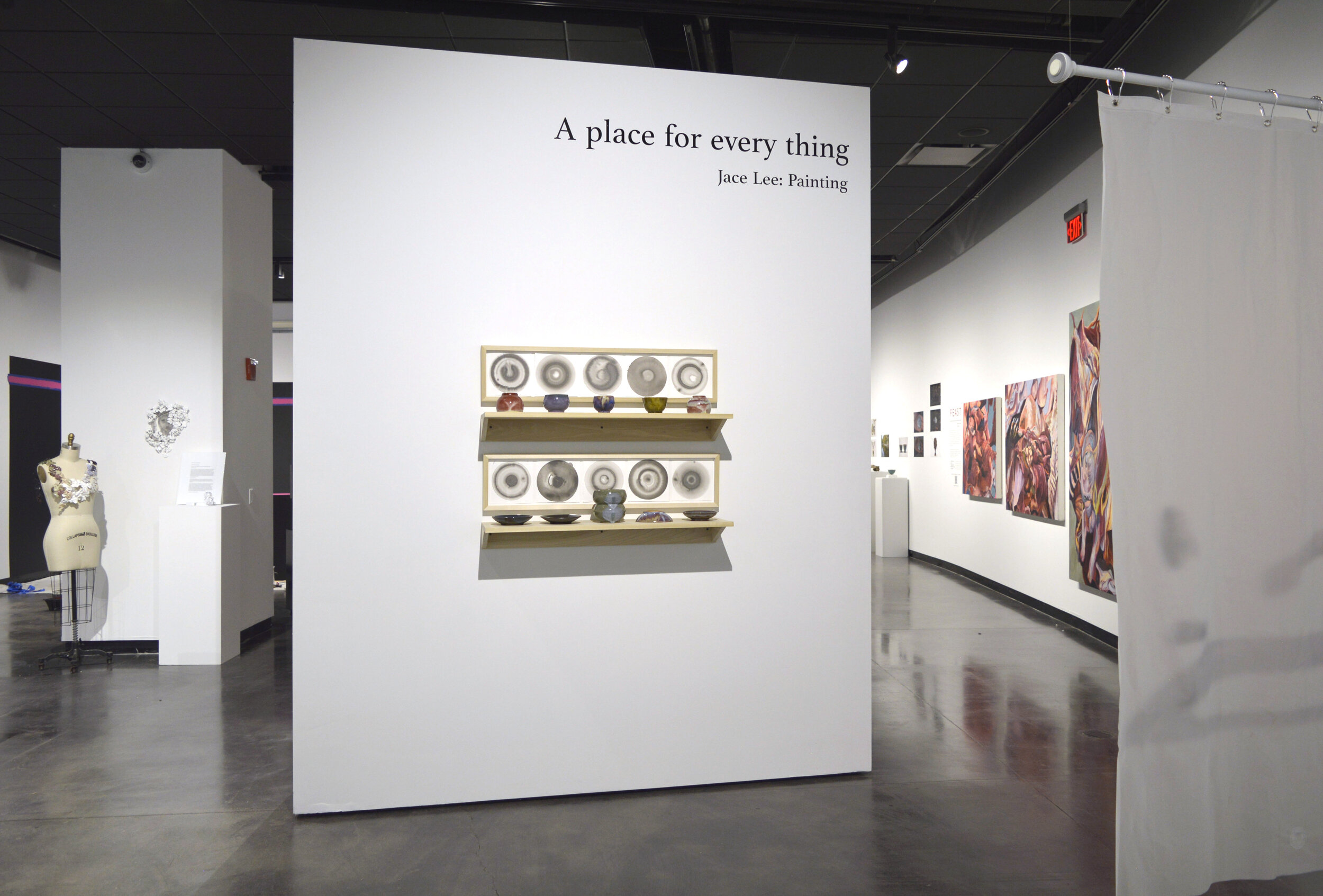
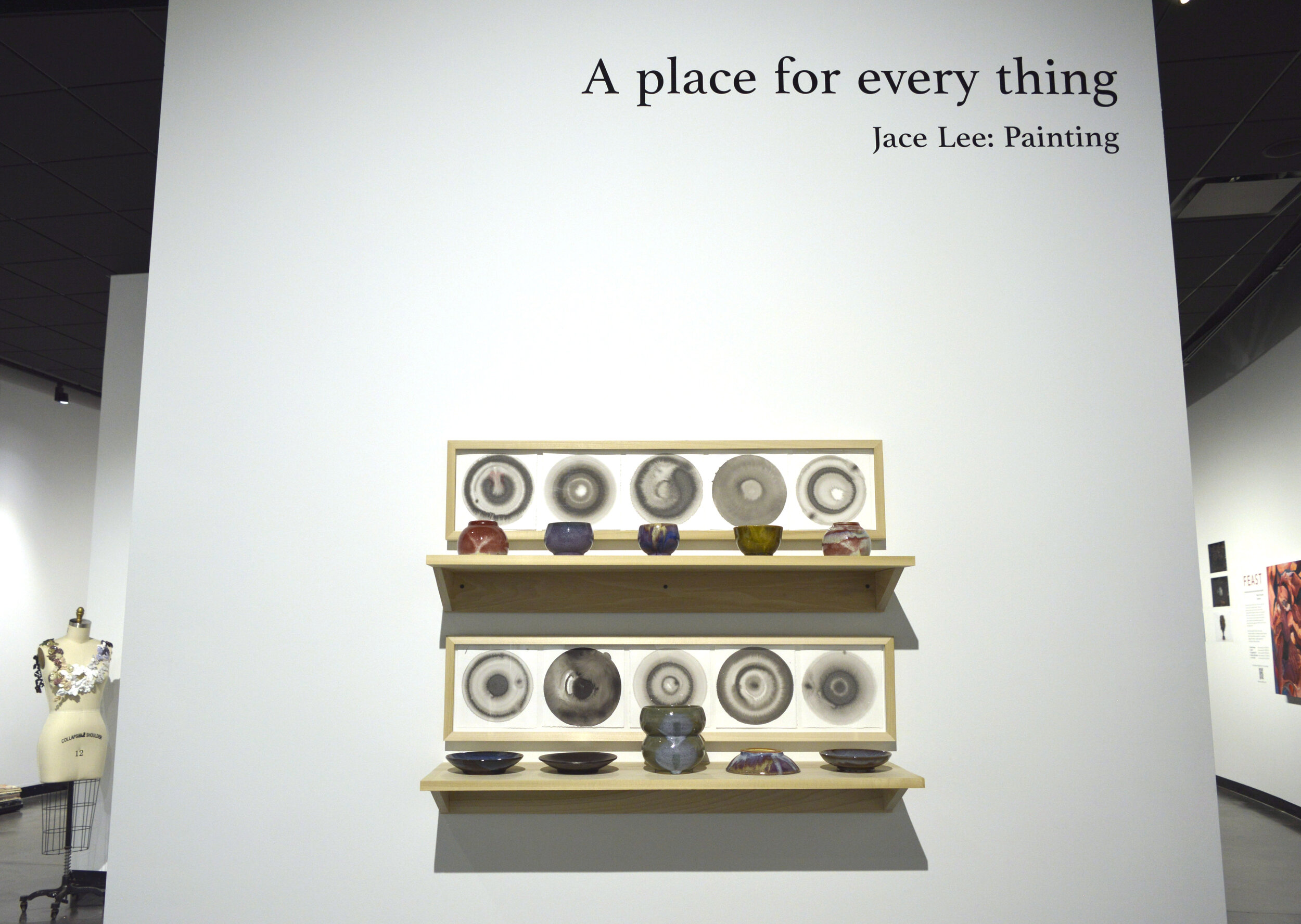
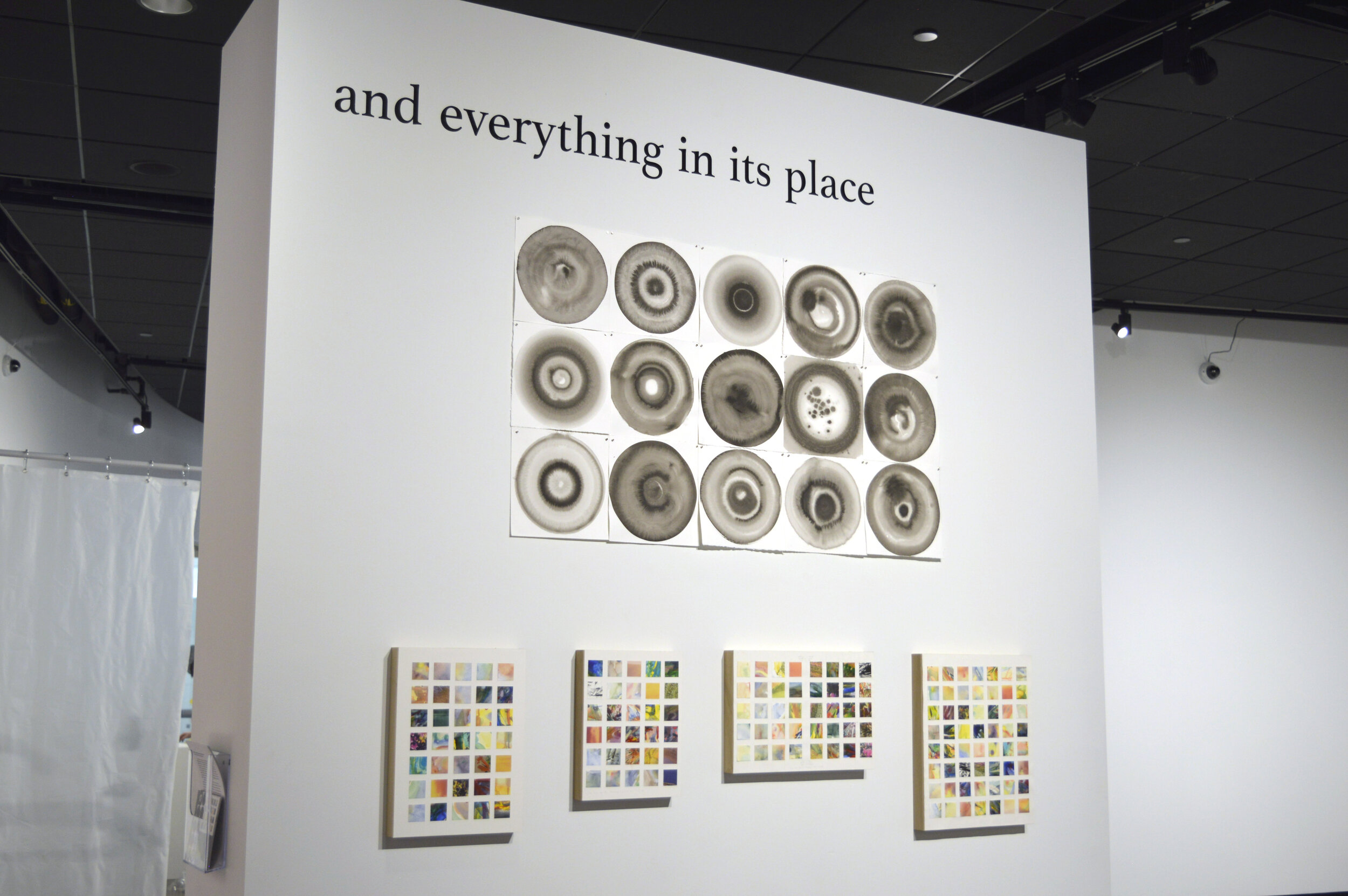

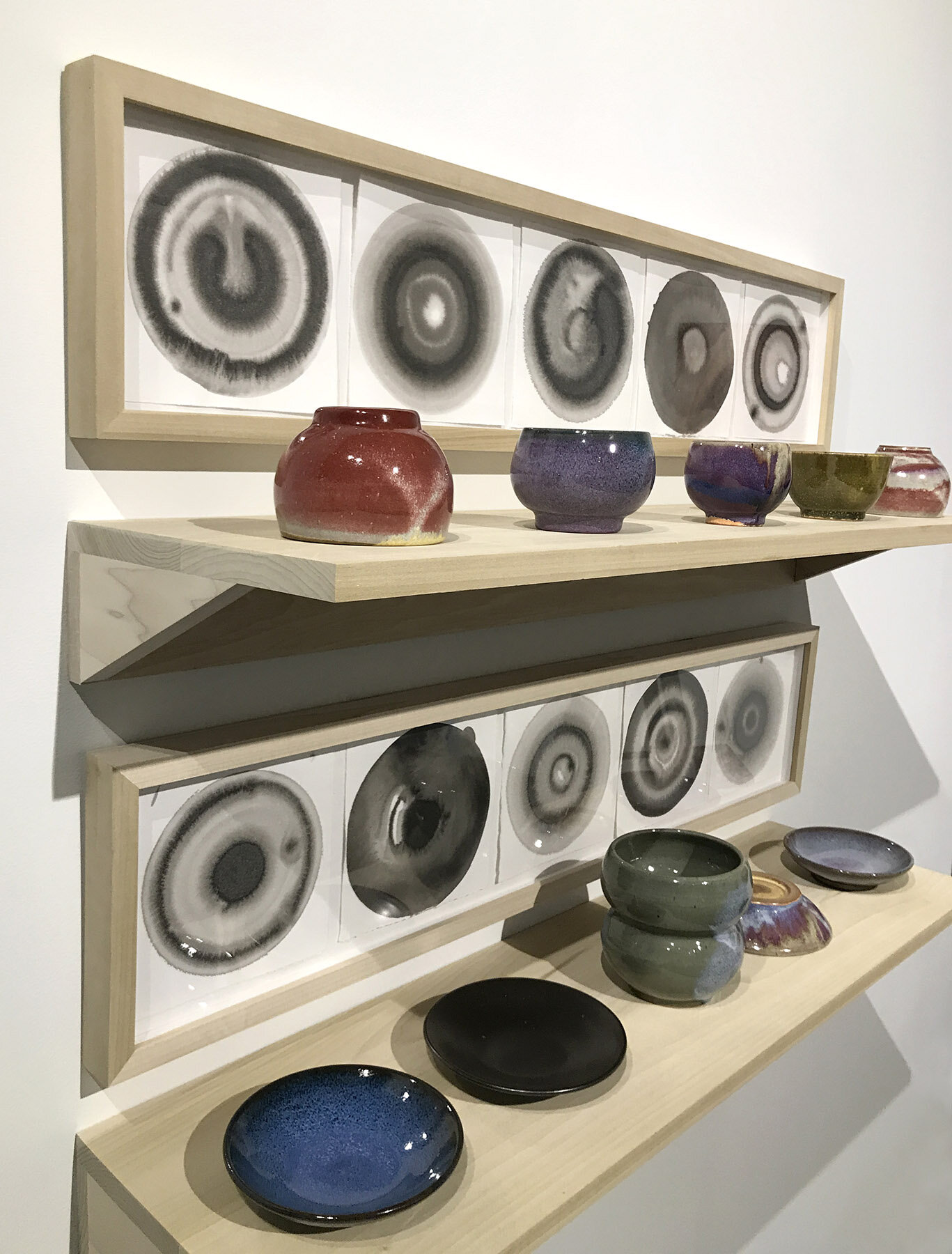
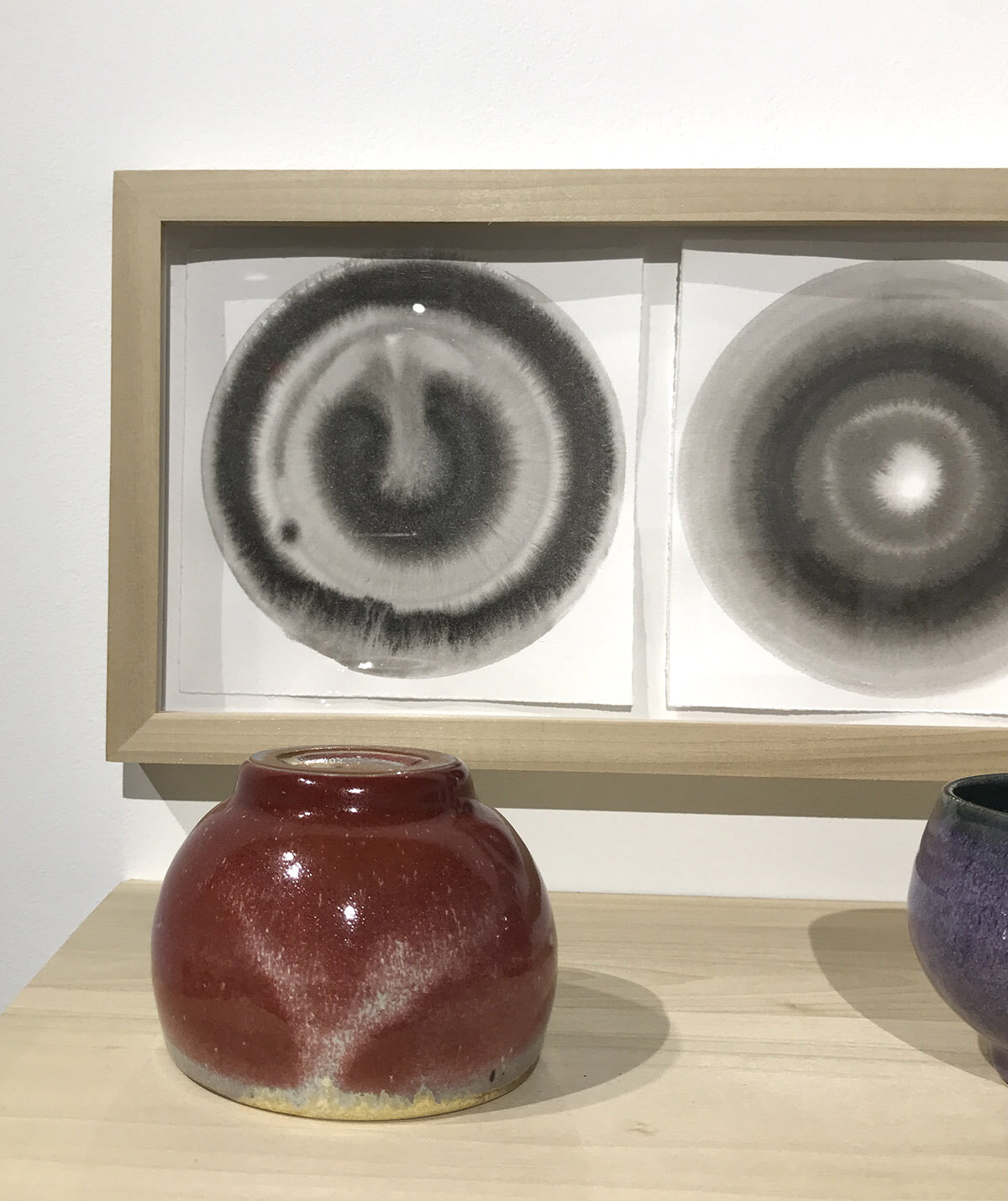
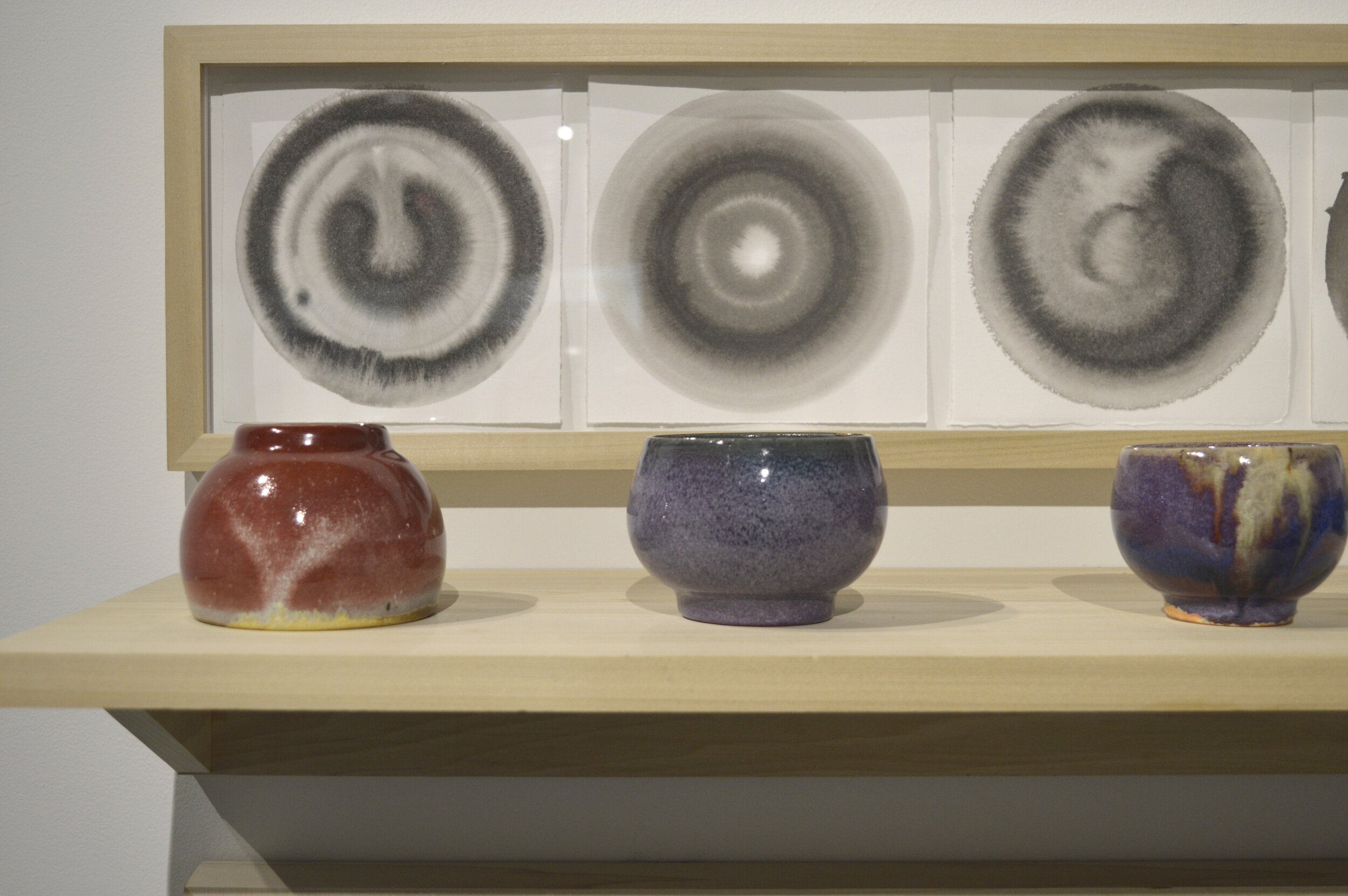
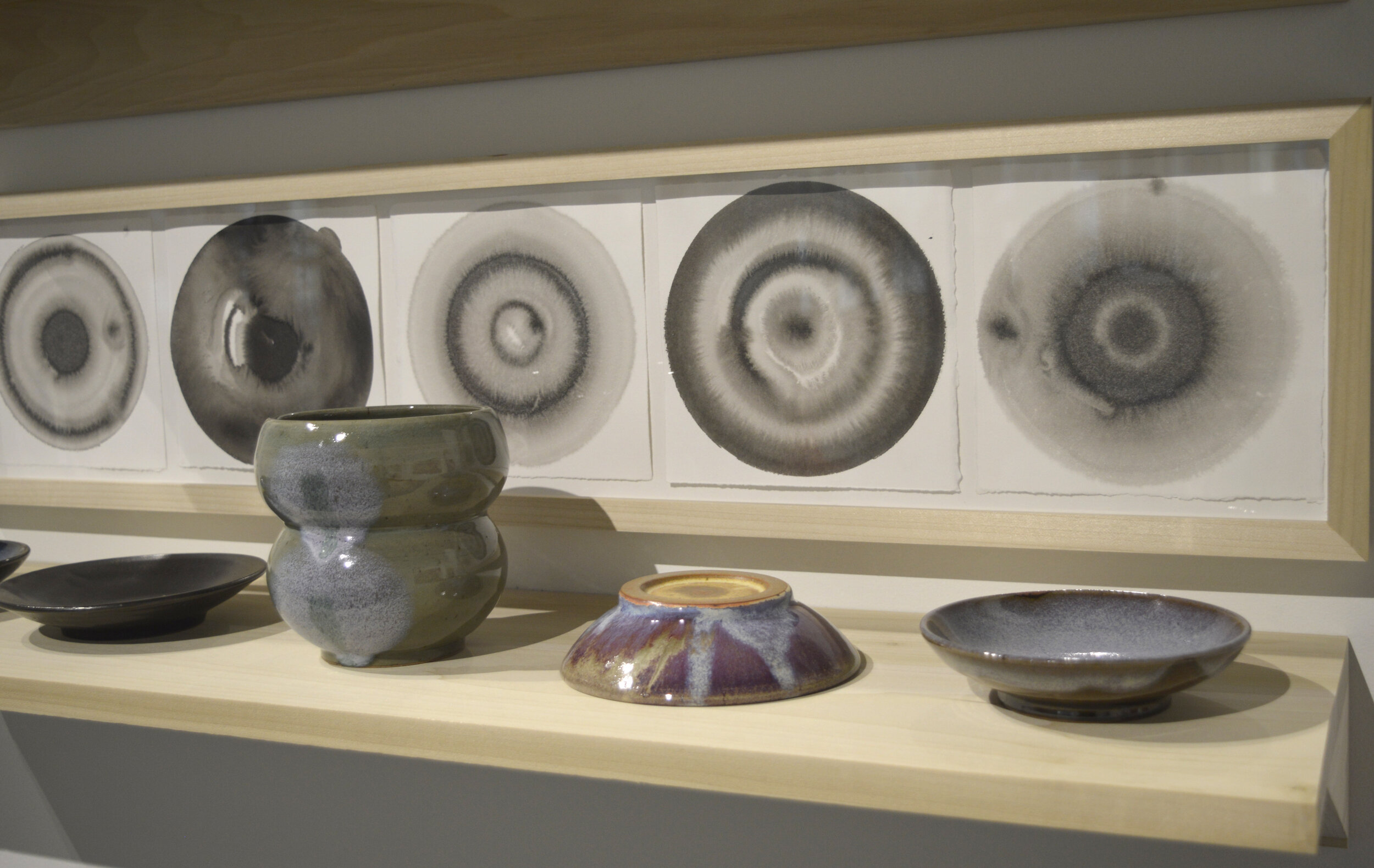
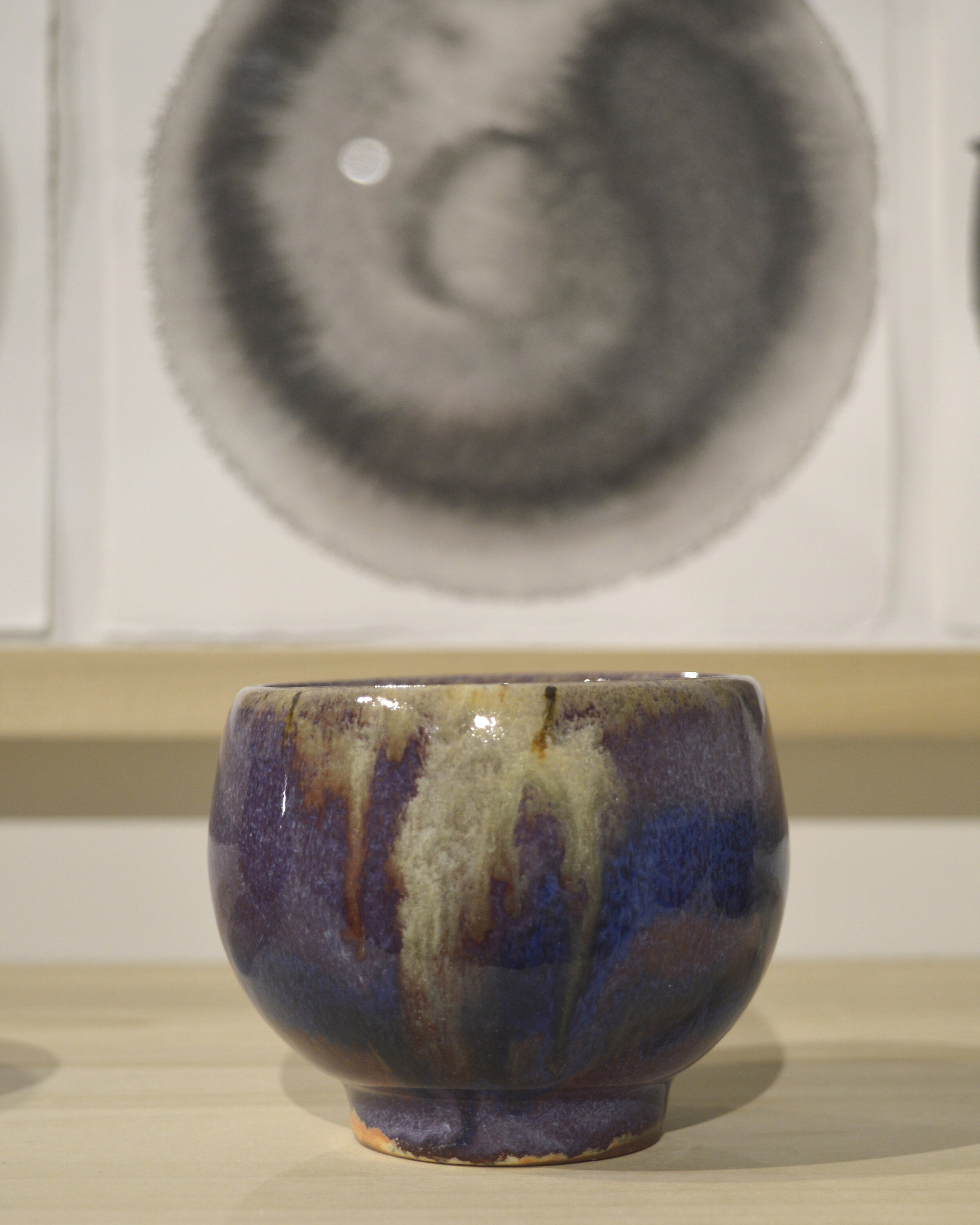
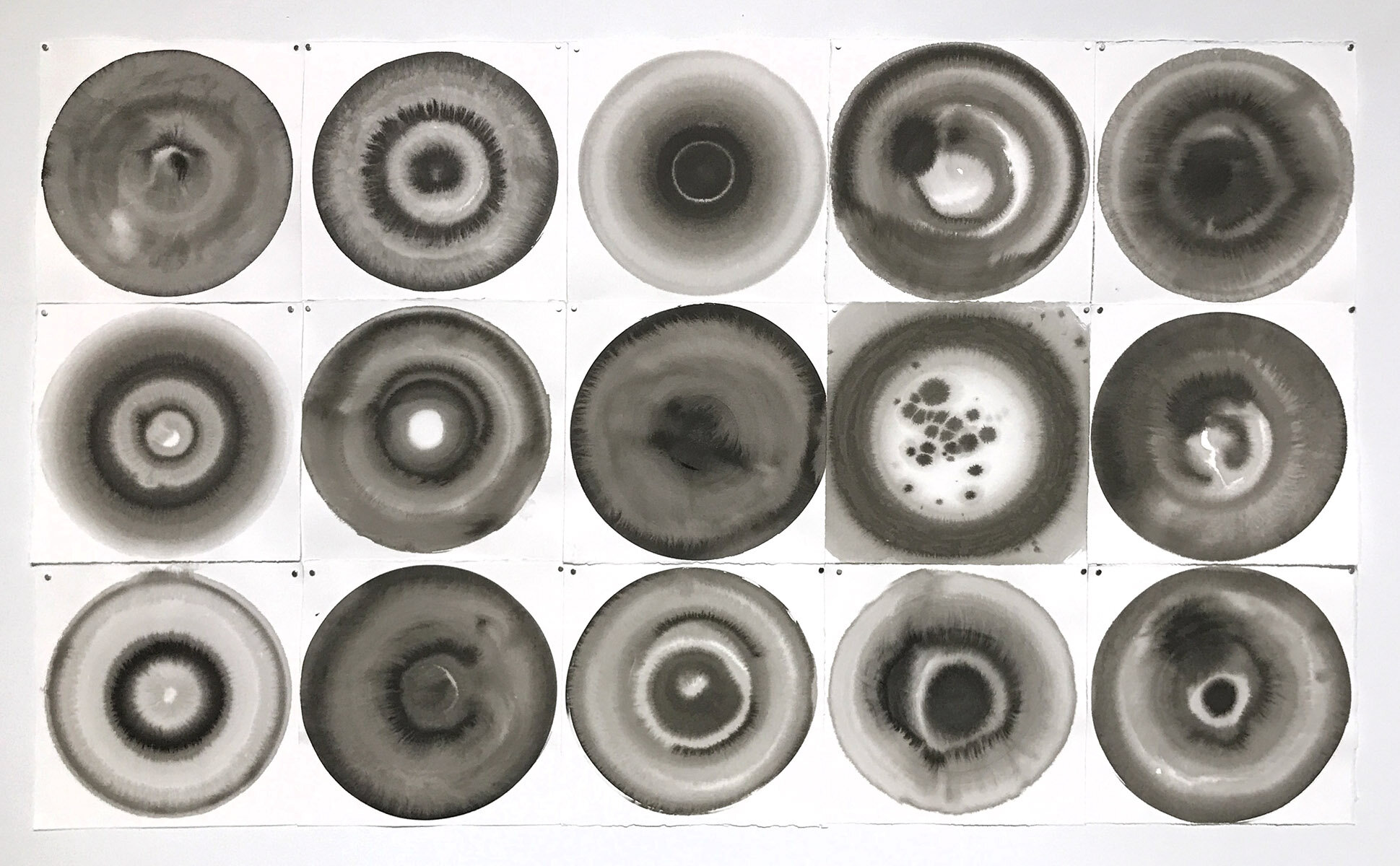
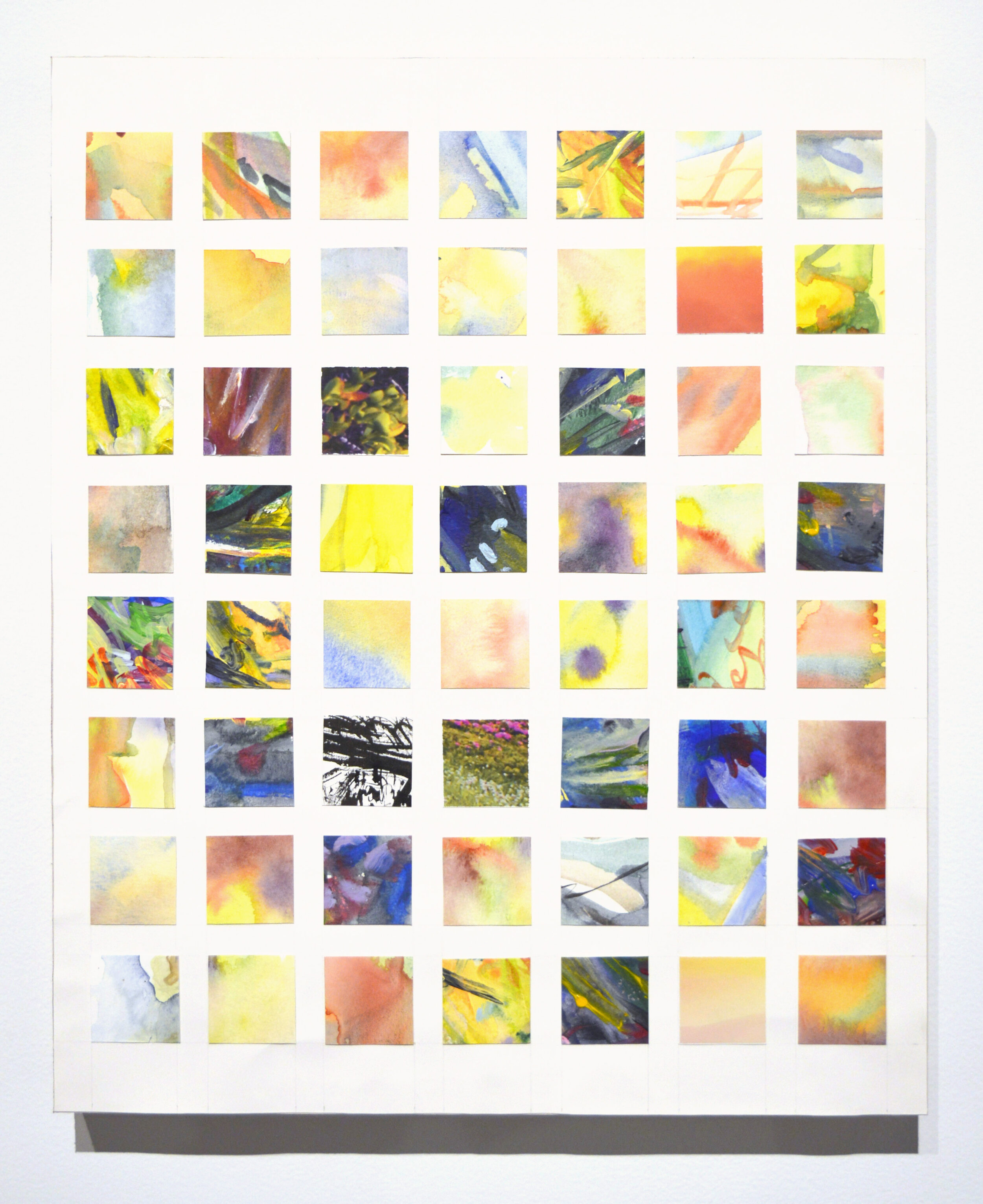
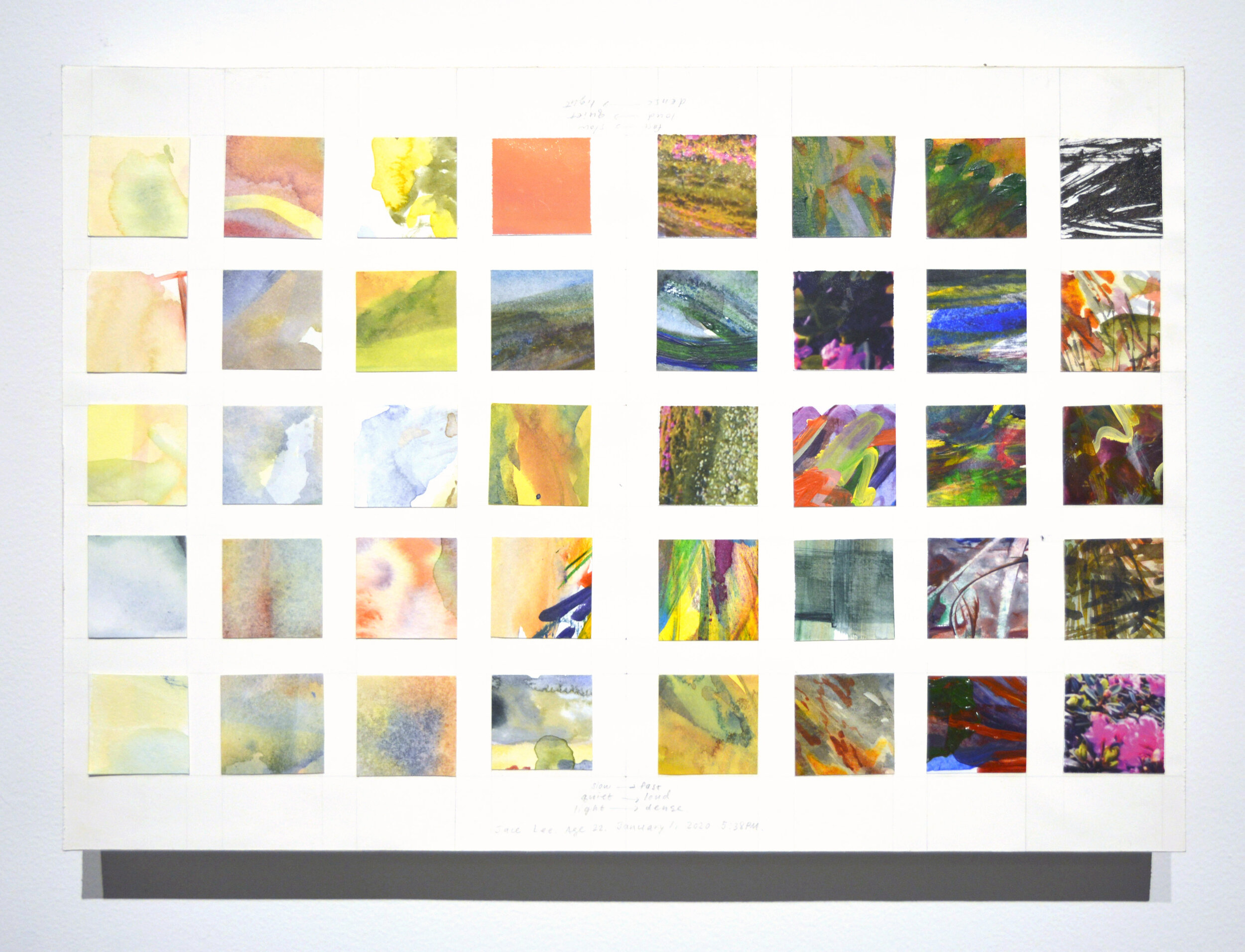
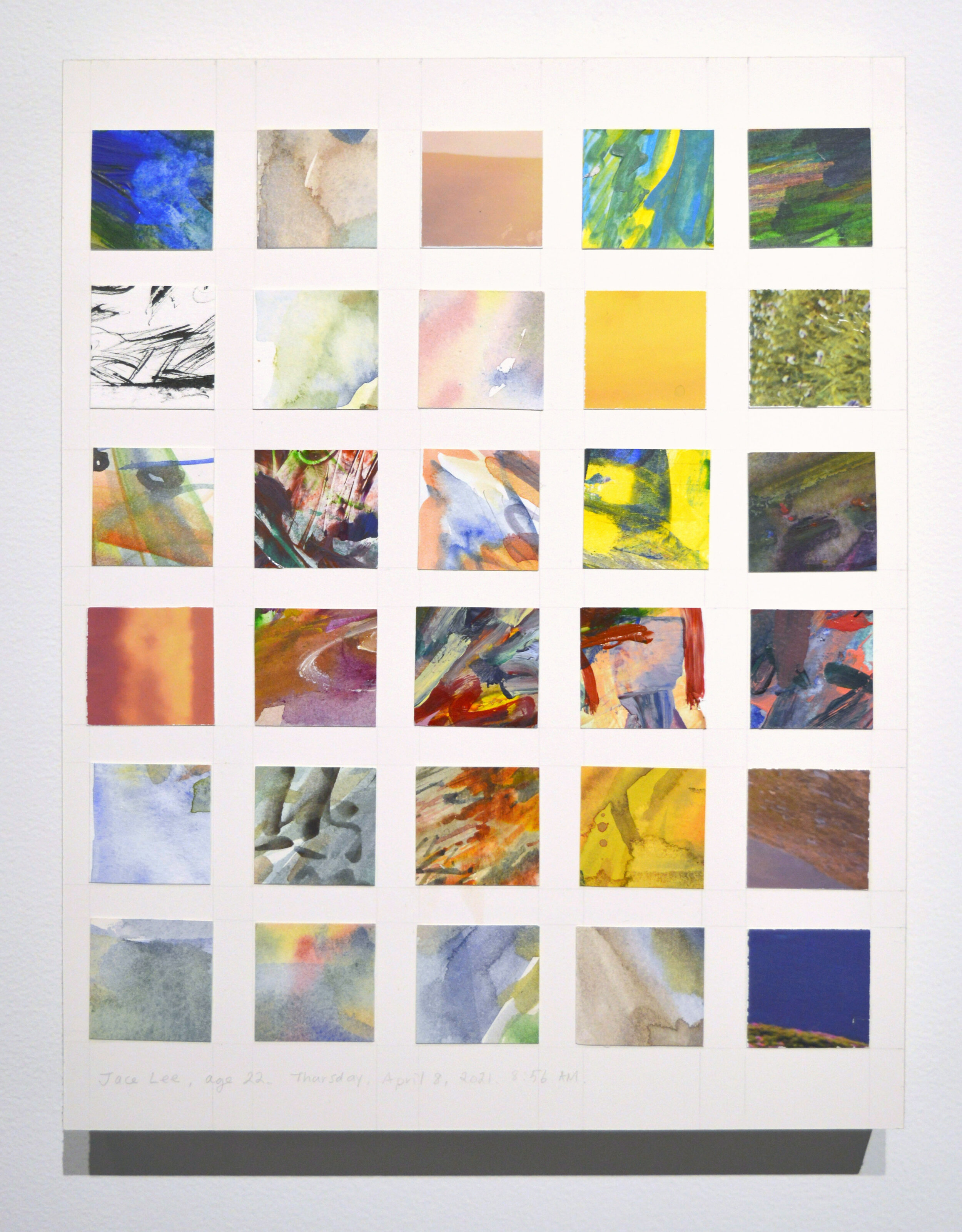
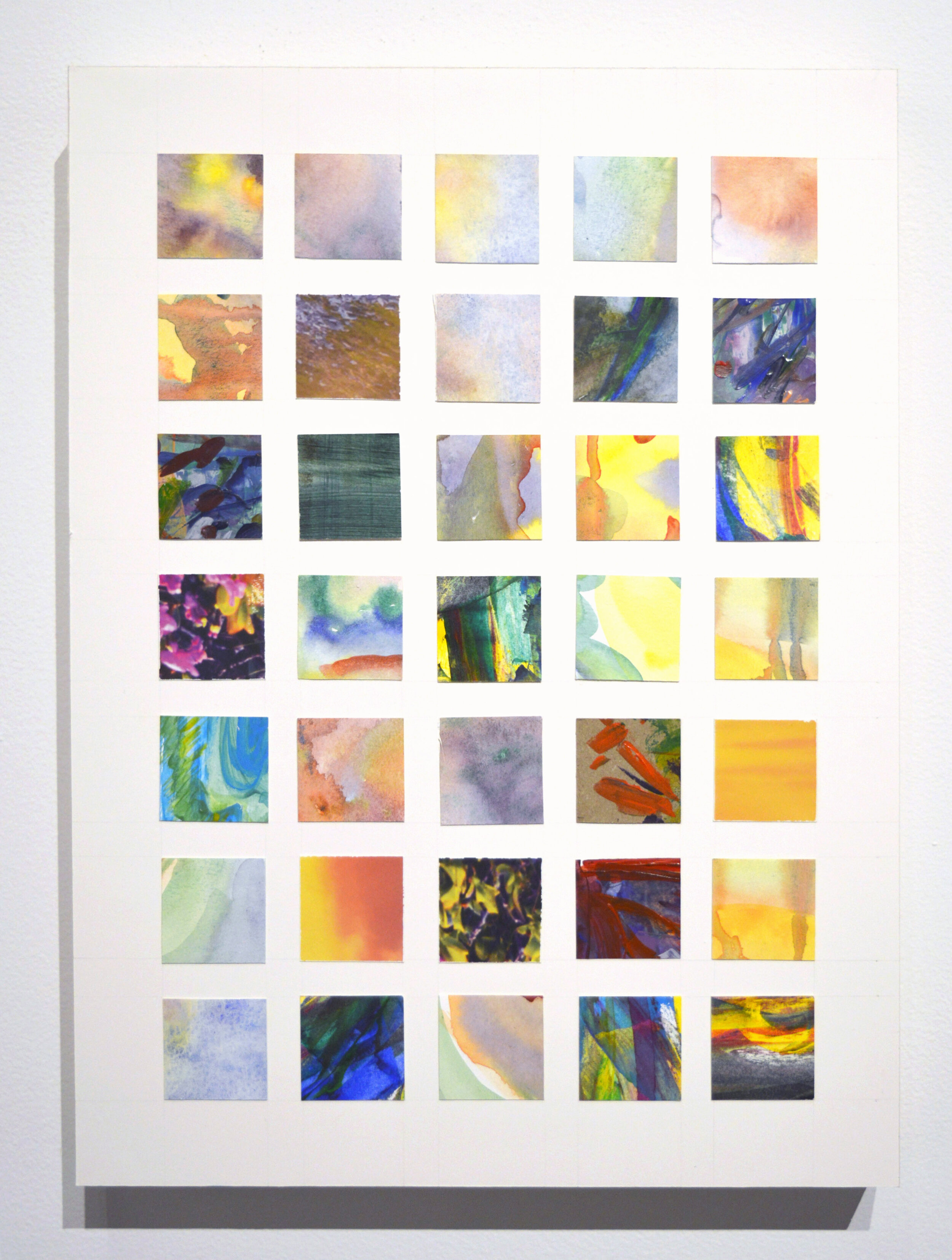
A place for every thing / and everything in its place
Reinberger Gallery, Cleveland, Ohio. BFA Thesis Show. May 3rd - May 7th, 2021
The two bodies of work shown are titled “Wheelworks” and “Puzzles.” Wheelworks is a series of drawings and pottery, both made on the potter’s wheel. Clay and ink are similar in the immediacy of their material qualities, and the density and weight that is capable of holding tactile information. When throwing a pot, the touch of the maker’s hand is embedded in its walls, which I think of as an information recording process that gives it function as well as form. The drawings, made by touching wet paper with an ink-laden brush while spinning on the wheel, also record information about time and movement. The drawings are like portraits of the throwing process. The interaction of material, water, and time, which isn’t readily visible in the pottery pieces, is documented in the way ink bleeds and spreads in the drawings.
The Puzzles are collaged from dozens of abstract paintings generated for this process. For each iteration, I selected a number of small painted squares, and arranged them on a grid. After the pieces were fixed to the paper, I recorded my name, age, and the date and time of completion. I also invited friends and peers to create Puzzles with the same process in my studio. I gave them the same parameters, and they used the same painting pieces and grid format. Although their choices were limited to the selection of pieces and arrangement, the resulting works still surprised me. Each person created a version of Puzzles that I could not have made. I think of these as a record of choices, or a portrait of an individual through their choices.
Wheelworks and Puzzles emphasize our innate ability to sort and draw connections between visual elements. The same visual organizing process led to making the Puzzle series and to pairing ink drawings and ceramic pots in the installation of Wheelworks. These works exist to record a function between intuition and logic, which people are constantly using to make decisions and create order. I was interested in making these choices visible by imposing parameters and creating multiples. While configuring the installation of this exhibit, I thought about what information was gained or generated by the simple act of putting two things next to each other. There is an aesthetic language that connects these works across disciplines and forms, making a place for every thing in its grammar.